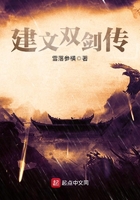"The great riches of the country, however, are a total waste at the present time, but which the Pacific railroad will at once develop, and make to itself the foundation of a vast revenue. Irefer to its metallic wealth, the silver, gold, and copper mines that abound in almost every mountain and valley, between the Rio Grande and the Gulf of California.
"The ores of Chihuahua and Sonora [now Arizona. S. M.] are chiefly sulphuret (lead or iron), or native silver in porphyritic or stratified limestone rocks passing at greater depths into igneous rocks. From loose piles lying upon the surface and evidently picked over, I procured specimens of silvier and copper. Three samples representing points on the line of our exploration about equi-distant from each other, viz.: the Rio Grande, the neighborhood of Tubac, and within 90 miles of the junction of the Gila and Colorado rivers, were submitted to Dr.
I. K. Chilton, of New York, for analysis. He found in one sample of lead ore (argentiferous galena), by fire assay 71 per cent. of lead, and the "LEAD YIELDED SILVER EQUIVALENT to 128 ounces, 1dwt. to the ton" (of 2000 pounds).
"In another, he found the lead obtained from it to yield silver in the proportion of 72 ounces 5 dwts. to the ton or 2000 pounds.
"The copper specimen was the red oxide, and yielded as follows:
Copper,............ 71.80
Iron,............... 7.84
Oxygen,.............12.34
Silicia, Alumina,....8.02
------
100 parts.
"The Papagos and Pimas Indians, by proper management, might be made very useful, in working upon the road where there is not much rock excavation. They are unlike the Indians of Texas, or the Apaches, living in villages and cultivating the soil, besides manufacturing blankets, baskets, pottery, etc. Quiet and peaceable, they have no fears except from their enemies, the Apaches, and are very industrious, much more so than the lower order of Mexicans, and live far more comfortably. It is astonishing with what precision they construct their acequias--irrigating canals--some of them, the acequias madre, of very large size, and without the use of levelling apparatus, but simply by the eye. Their gardens and farms too are regularly ditched and fenced off into rectangles and circles, with hedges and trees planted as if done by more enlightened people."The population of the new Territory of Arizona is at present not far from eight thousand, and is rapidly increasing. The Mesilla Valley and the Rio Grande are probably the most thickly populated, containing about five thousand people. A majority of the Mesilla inhabitants are Mexicans, but they will be controlled by the American residents, whose number and influence is constantly on the increase. The Santa Cruz Valley, in which are situated the towns of Tueson, Tubac, Tumacacari, and the mining settlement of Sopori and others, is, next to Mesilla, the most thickly settled. Tueson was formerly a town of three thousand inhabitants; but the majority have been driven off by the Apache Indians. It is fast becoming a thriving American town, and will before long be a place of more importance than ever before. Real estate is already held at high rates, and the erection of buildings shows that American energy is about to change the face of the last half century. Tubac had been completely deserted by the Mexicans. It has been reoccupied by the Sonora Exploring and Mining Company, and now boasts a population of several hundred.
The Calabazas valley is also fast filling up with an American population, and another year will see the whole centre of the Territory dotted with settlements. Many of the fine claims on the San Pedro River have already been located by emigrants under the general pre-emption law, but until protection is afforded to the settlers, but little progress will be made in agricultural pursuits. The Apache Indian regards the soil as his own, and having expelled the Spanish and Mexican invader, he feels little inclination to submit to the American. A small settlement of Americans is growing up at Colorado city, opposite Fort Yuma, at the junction of the Gila and Colorado rivers. This point is destined to be one of great commercial and pecuniary importance.
Situated at the present head of navigation, at the point where the overland mail route crosses the Colorado, and where the Southern Pacific Railroad must bridge the stream, it is a necessary stopping place for all travel across the country. Here are transhipped all the ores coming from the Territory, which find their way to market down the Colorado to the Gulf of California, thence by steamer or sailing vessel to their destination. Here all supplies of merchandise for the Territory are landed, and from this point forwarded to their various owners. A thriving commerce has already sprung up between Arizona and San Francisco. In almost any daily paper in San Francisco may be seen vessels advertised for the mouth of the Colorado. Two steamers find active employment in transporting government stores from the head of the Gulf of California to Fort Yuma, and goods to Colorado city for the merchants of Tueson, Tubac, Calabazas, and for the mining companies. Should the exploration of the Upper Colorado by Lieutenant Ives, United States Army, now in progress, prove successful, Colorado city will become still more important, as the surplus products of the rich valleys of New Mexico, Utah, and California to the north, will all find a market down the Colorado. Property in this new city is held at high rates, and by the last San Francisco News Letter is quoted at an advance. The population of Arizona Territory has much increased within a few months by emigration from California. The massacre of Henry A.















